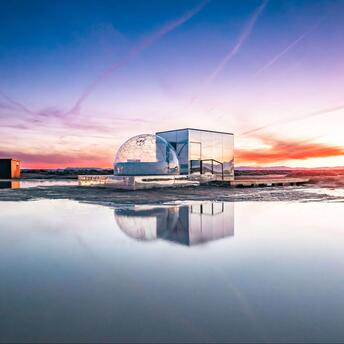Stargazing Highlights in May: A Guide for Enthusiasts and Travelers

Last month's spectacular total solar eclipse marked just the beginning of what promises to be a stellar year for astrotourism, and May is packed with celestial events perfect for both amateur astronomers and casual observers. As we move into the warmer months, the conditions for stargazing in the northern hemisphere become ideal, offering clear, comfortable nights for exploring the wonders of the cosmos.
This month features several notable astronomical events, starting with the Eta Aquarid meteor shower, peaking on the nights of May 4-5. Originating from the debris left by Halley’s Comet, this meteor shower will offer an impressive display, especially in the southern hemisphere, although viewers in the northern hemisphere will still be able to witness 10 to 30 meteors per hour in the right conditions. The best time to observe this event is post-midnight until dawn, focusing towards the Aquarius constellation. Optimal viewing locations include dark-sky areas free from light pollution.
Adding to the excitement, the early mornings of May 4 and 5 will also present a beautiful planetary alignment involving the moon, Mars, Saturn, and even distant Neptune—though Neptune will require binoculars or a telescope to see. This alignment will be visible just above the eastern horizon before sunrise, providing a splendid photo opportunity and a thrilling observational challenge for stargazers.
The new moon on May 7-8 brings another perfect opportunity for deep-sky viewing. The absence of moonlight allows the Milky Way to shine brightly, visible rising from the north to the southeast horizon. This darker sky will not only enhance the visibility of the Milky Way but also improve the conditions for viewing fainter celestial objects.
Mercury will reach its greatest elongation on May 9, offering a rare chance to see this elusive planet. Positioned 26 degrees from the Sun, Mercury will be best viewed in the pre-dawn sky. This event is considered one of the best times to spot Mercury without optical aids, though binoculars or a telescope can provide a clearer view.
Towards the end of the month, on May 23, the Full Flower Moon will illuminate the night sky. This full moon, named by the Algonquin tribes for the abundant blooming flowers of May, will be visible on the nights of May 22 and 23, reaching its peak brightness at 9:53 a.m. EDT.
Finally, the month closes with another celestial pairing on May 31, when the moon will appear very close to Saturn. This conjunction will be best viewed in the early morning hours, offering a spectacular end to a month full of astronomical delights.
Whether you're an experienced astronomer or a traveler eager to add stargazing to your adventure, May offers numerous opportunities to gaze upwards and marvel at the universe's wonders. So, grab a blanket, head to a dark spot, and enjoy the celestial show that May has in store.



















